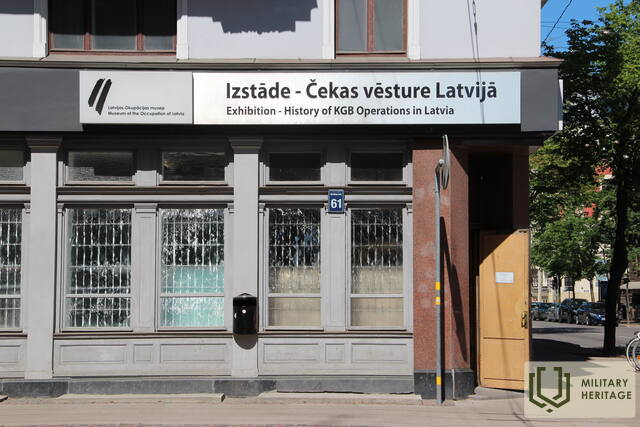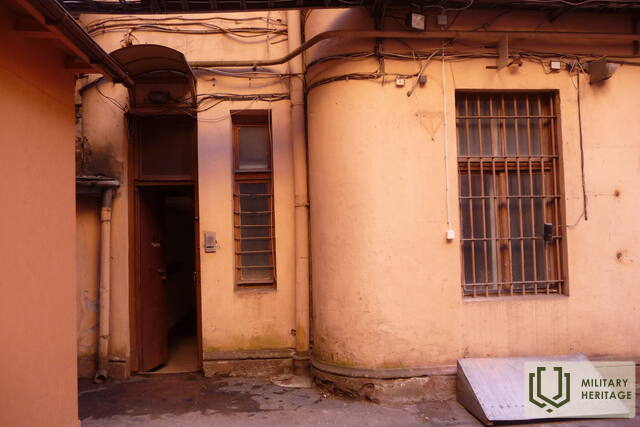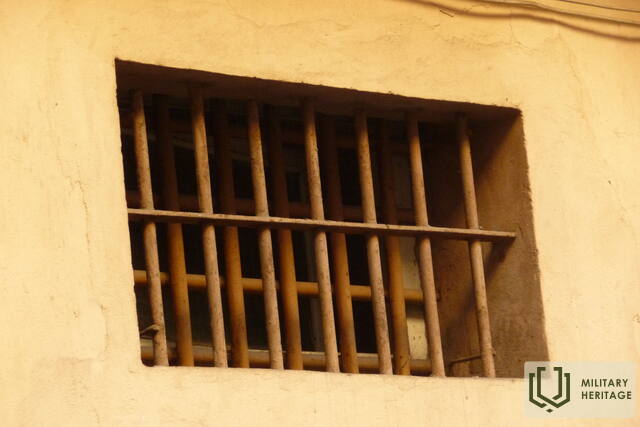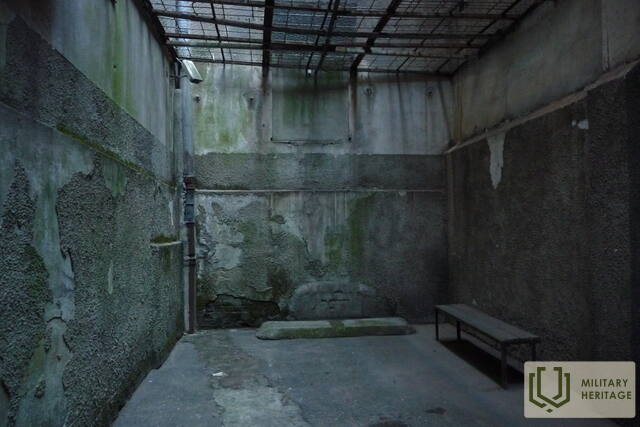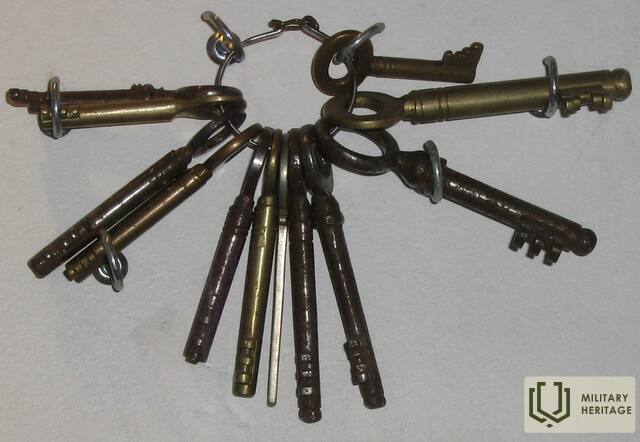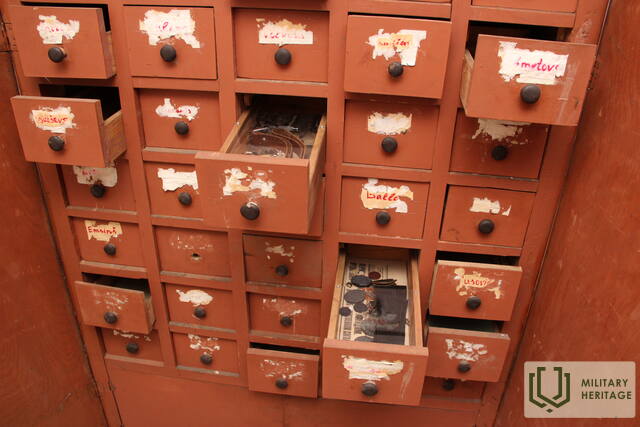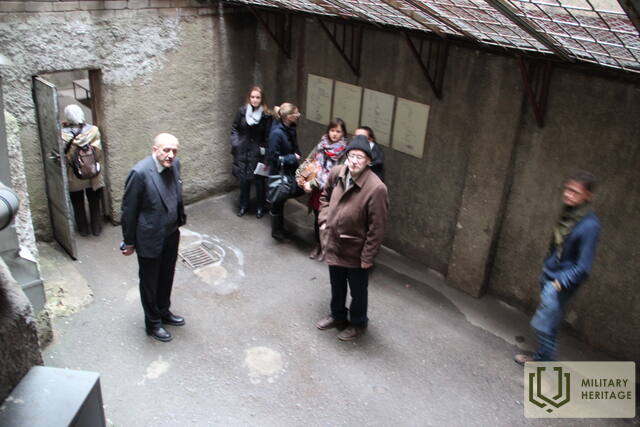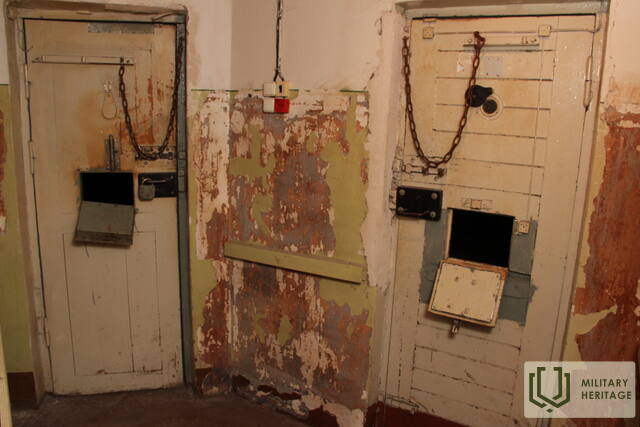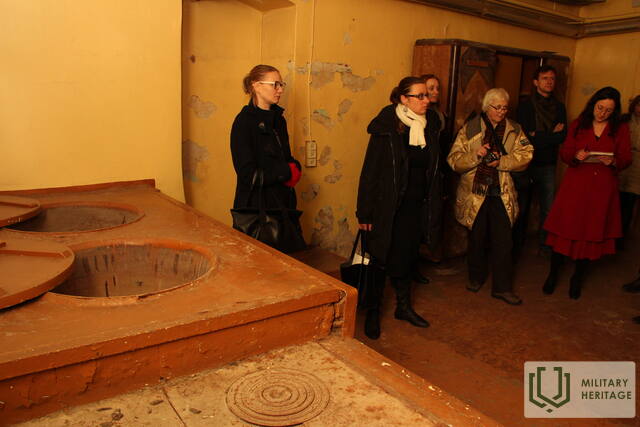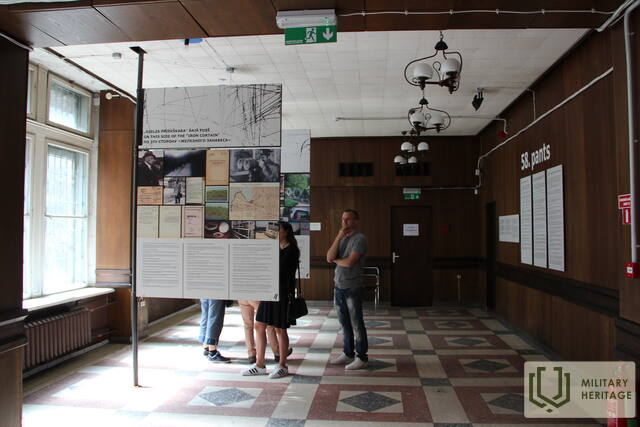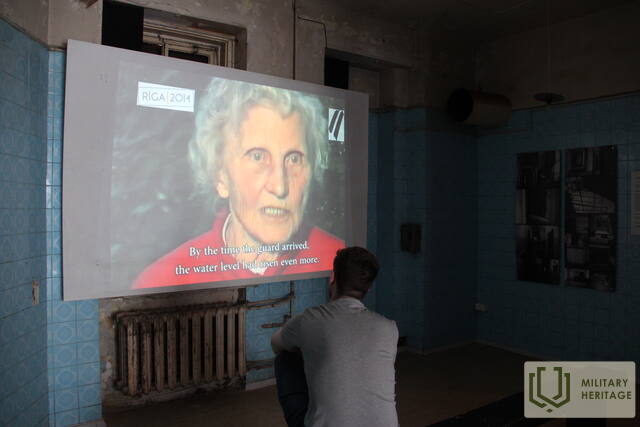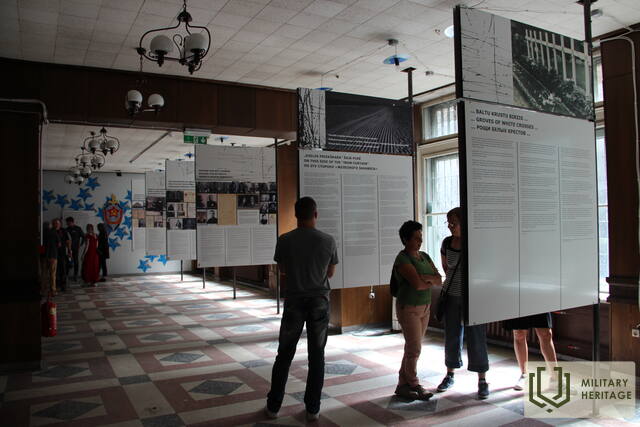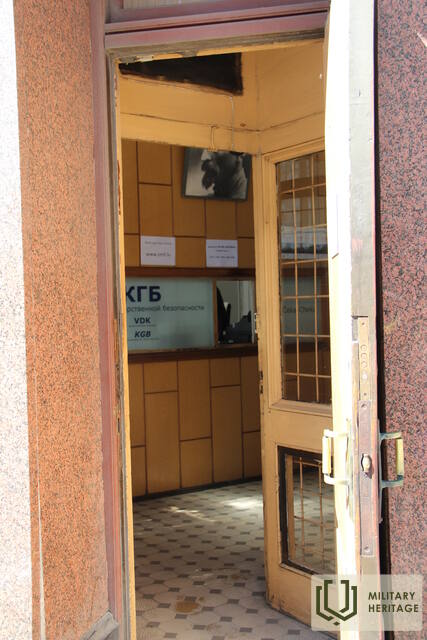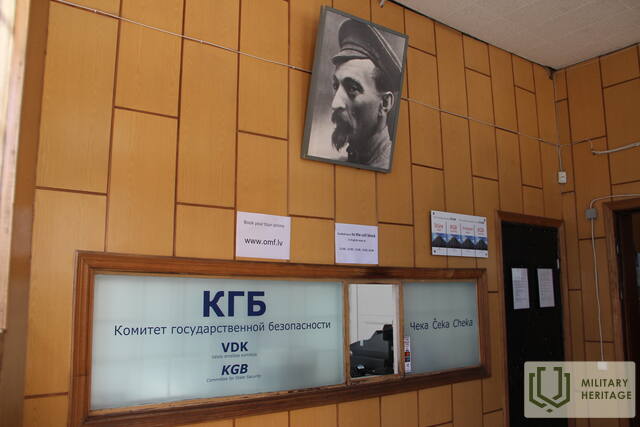Exhibition in the KGB Building "History of KGB Operations in Latvia"
Museum

Atrodas Rīgā, Brīvības un Stabu ielu krustojumā.
1911. gadā būvētais nams ir viens no skaistākajiem Rīgā. Tautā saukts par “Stūra māju”, ir baisākais Padomju okupācijas režīma simbols Latvijā. “Čeka” bija īpaši represīva struktūra - viens no PSRS varas balstiem. Tās darbība Latvijā cieši saistīta ar ēku Brīvības un Stabu ielas stūrī.
“Stūra mājā” čeka darbojās okupācijas laikā no 1940.gada līdz 1941. gadam un atkal, sākot no 1945.gada līdz 1991. gadam. Politiskās vajāšanas tiešā veidā skāra ap desmitiem tūkstošu Latvijas iedzīvotāju. Padomju varas pretinieku apkarošana turpinājās arī pēc 2. pasaules kara. Čekas darbības metodes nedaudz mainījās pēc Staļina nāves. Fizisku mocīšanu nomainīja psiholoģisks terors. Vairākums čekas aģentu bija latvieši (52%). Krievi bija otrā lielākā grupa - 23,7 %. 60,3% aģentu nebija Komunistiskās partijas biedri. Augstākā izglītība bija 26,9% aģentu. Sistēma bija veidota, lai iesaistītu vietējos iedzīvotājus un tādējādi panāktu kontroli pār sabiedrību. Čekas darbības metodes Latvijā nav pilnībā izpētītas. Darbinieku saraksti un dienesta lietas atrodas Krievijā. Latvijas varas iestādēm un pētniekiem tās nav pieejamas.
Mūsdienās var aplūkot Latvijas Okupācijas muzeja izstādi par “čekas” darbību Latvijā. Kopā ar gidu var izstaigāt cietuma kameras, gaiteņus, pagrabu un iekšpagalmu.
Used sources and references:
Hans, V. VDK un Latvija. Rīga: Latvijas mediji, 2019.
Latvijas Okupācijas muzeja oficiālā mājaslapa. Pieejams: http://sturamaja.lv/ [Aplūkots: 15.03.2021.].
Related timeline
Related topics
Related stories
About the Corner House
The narrator describes the first impressions of getting to the Corner House. Memories reveal the harsh living conditions of the prisoners.
The role of the former lieutenant of the legion, Arvīdas Gailīš, in the liquidation of Pēteris Chever's group
Captain Pēteri Čevera and seven other partisans were captured on November 1, 1950 in the Engure forest massif, where the group of fake partisans of former legion lieutenant Arvīdas Gailīš (the agent-fighter's nickname was "Grosbergs") had stationed themselves by chance. It included operatives of the LPSR VDM and agent-militants who played the role of "forest brothers".
Landed Leonid Zariņš - the check turns out to be useless for recruitment
Leonid Zariņš was recruited as a CIA agent in the USA and in 1953 he crossed the border of the USSR on a plane from Germany and landed with a parachute near Auce. Unfortunately, one of the contacts he was supposed to be in touch with had turned out to be a double agent, and Leonidas was soon arrested. He refused to cooperate with the Chekists and was shot without trial in 1954.
USSR double agent - Edvīns Ozoliņš with the nickname "Pilot"
Cold War intelligence and counterintelligence battles between the West and the USSR involved agents from both sides and double agents. Since the twenties of the 20th century, the Soviet security services had developed a completely new measure - disinformation - for the purpose of protecting the regime. A term which until then was not known at all in the West.
Alfred Riekstiņš with the nickname "Imants" dies as a result of the betrayal of a double agent of the USSR
Alfrēds Riekstiņš, a Latvian legionnaire, was recruited for cooperation with the US intelligence service CIA after World War II.




